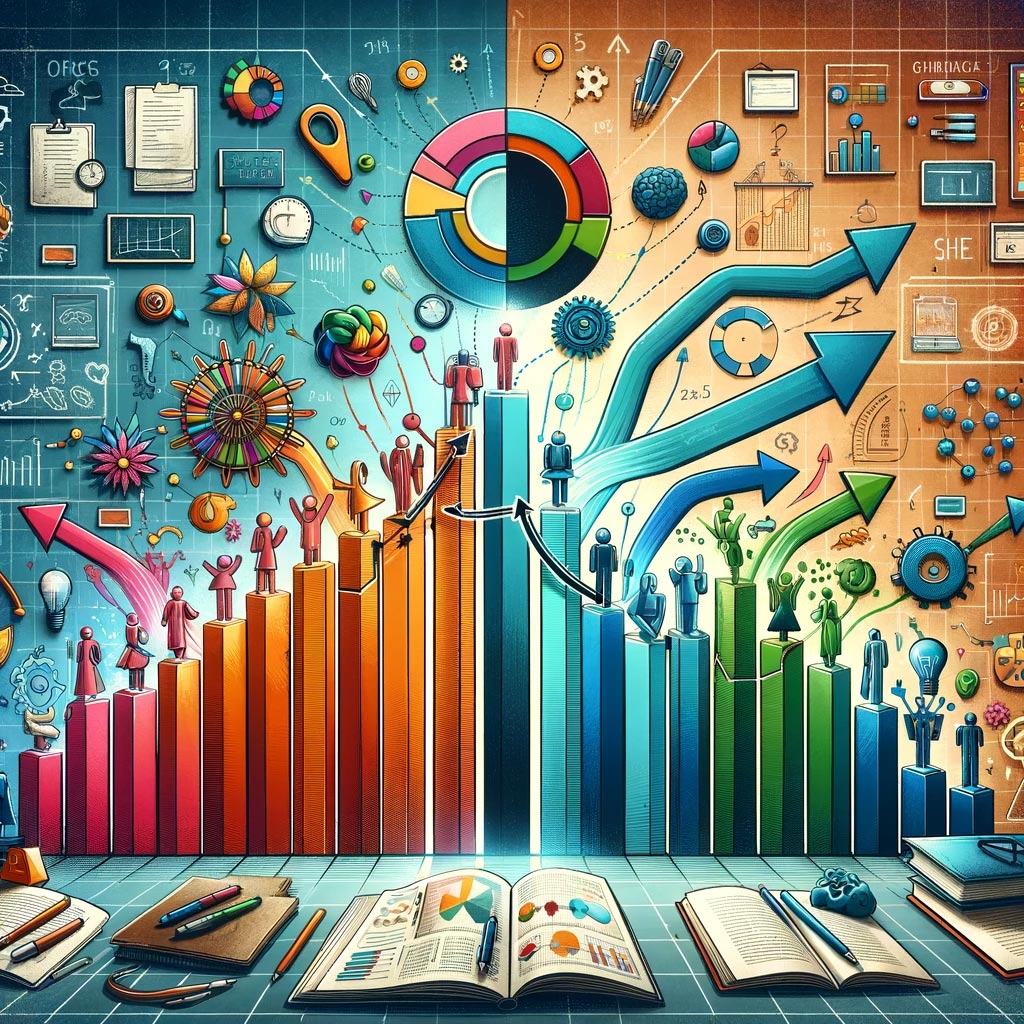
The impact of teaching methods on academic performance is a critical area of focus for educators, administrators, and policymakers. Understanding the link between instructional strategies and student outcomes becomes essential as educational landscapes evolve.
This section explores the correlation between various teaching methods and academic performance, drawing on statistical evidence, expert insights, and contemporary research to provide a comprehensive overview.
Overview of Teaching Methods
Teaching methods encompass various approaches, from traditional lectures to innovative, student-centered strategies. These methods can significantly influence students' ability to absorb, retain, and apply knowledge. Essential teaching methods include:
-
Traditional Lecturing: Focuses on information delivery in a teacher-centered environment.
-
Interactive Learning: Engages students through discussions, group work, and hands-on activities.
-
Blended Learning: Combines online digital media with traditional classroom methods.
-
Personalized Learning: Tailors the educational experience to individual student needs and learning styles.
Impact on Academic Performance
Traditional Lecturing
While traditional lecturing can efficiently cover vast syllabi, its effectiveness in enhancing deep learning and critical thinking is often questioned. Research indicates that lecture-based teaching can lead to passive learning, where students are less likely to retain information in the long term.
Interactive Learning
Interactive learning, characterized by active engagement and participation, has significantly improved academic performance. Studies highlight that this approach fosters a deeper understanding of material, critical thinking skills, and retention rates.
For example, a meta-analysis published in the Journal of Educational Psychology reveals that students participating in active learning environments outperform their peers in terms of grades and exam scores in traditional settings.
Blended and Personalized Learning
Blended learning models, which integrate online resources with face-to-face instruction, offer flexibility and access to diverse materials, enhancing learning outcomes. On the other hand, personalized learning approaches adapt to each learner's pace and style, potentially increasing engagement and performance by addressing individual needs.
Statistical Evidence and Studies
Much research underscores the positive correlation between innovative teaching methods and improved academic performance. For instance, a study by the National Education Association found that personalized and interactive teaching methods lead to higher student achievement levels than traditional lecturing.
Additionally, using technology and digital tools in blended learning environments has been linked to enhanced student engagement and success rates.
Expert Opinions and Educational Insights
Educational experts argue that adopting more dynamic, student-centered teaching methods is crucial for meeting the diverse needs of today’s learners. According to Dr. Emily Johnson, an expert in educational psychology, "Incorporating interactive, blended, and personalized learning strategies not only supports diverse learning styles but also promotes a culture of engagement and motivation, leading to improved academic outcomes."
Real-Life Examples and Case Studies
Several case studies further illustrate the positive impact of innovative teaching methods on academic performance. For example, a high school in Oregon reported a significant increase in student test scores and graduation rates after implementing a blended learning program. Similarly, a university that adopted personalized learning practices observed notable improvements in student retention and performance metrics.
Conclusion
Extensive research supports the correlation between teaching methods and academic performance. Interactive, blended, and personalized learning approaches have consistently enhanced student engagement, understanding, and success.
As education continues to adapt to the needs of the 21st-century learner, embracing these innovative teaching methods will be vital to fostering academic excellence and preparing students for future challenges. Educators are encouraged to explore and integrate these strategies into their teaching practices, enriching the learning experience and maximizing student outcomes.
Education




